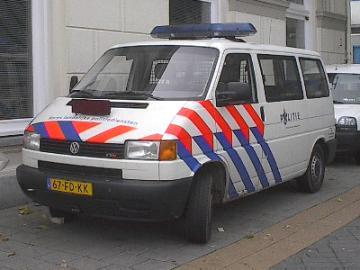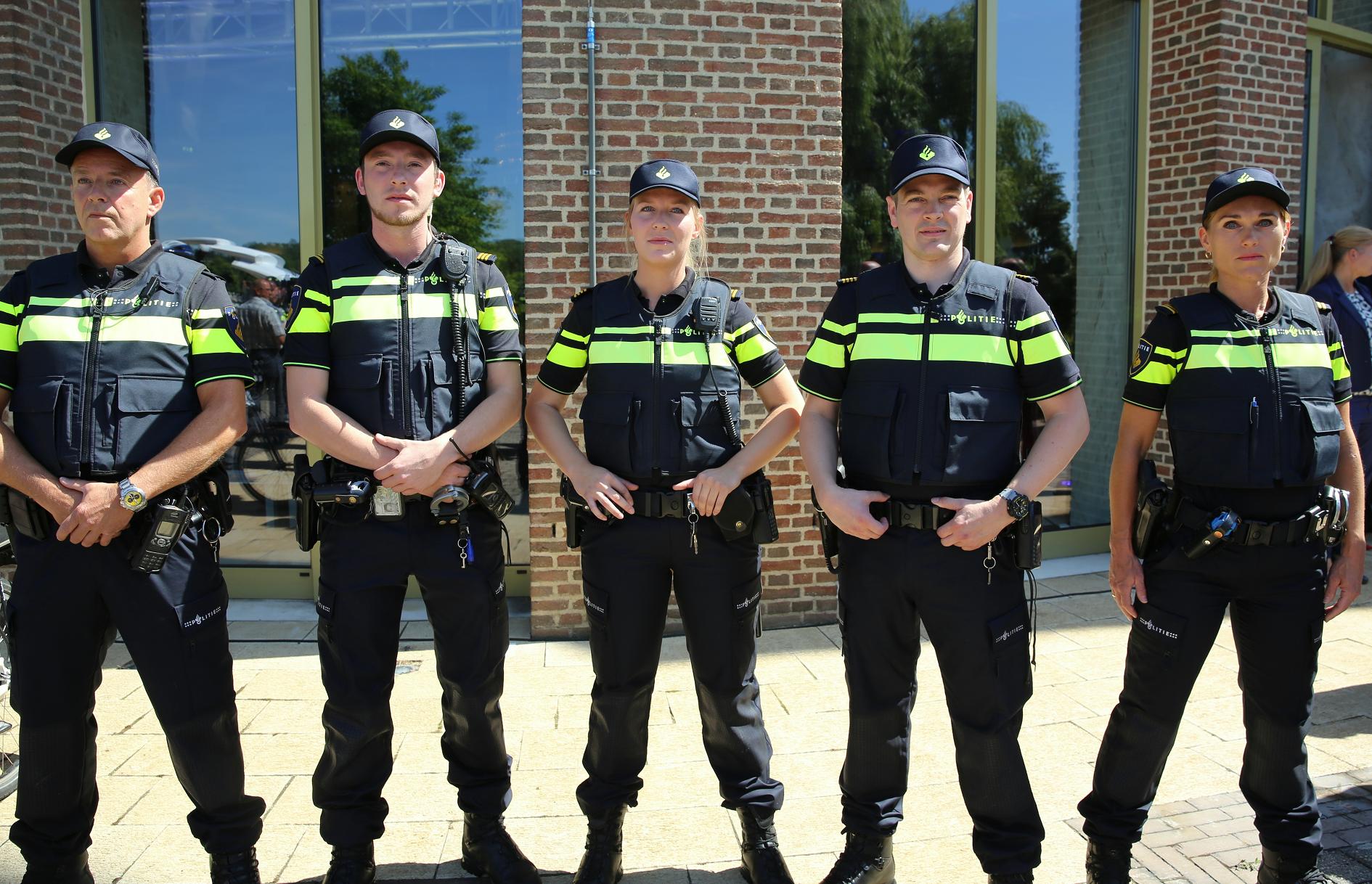|
Law Enforcement In The Netherlands
The National Police Corps (), colloquially in English as Dutch National Police or National Police Force, is the centralised, national law enforcement agency of the Kingdom of the Netherlands, and its sole police force. Constituted under the provisions of the Police Act 2012 (Politiewet 2012), the Corps functions as a single and unified police organisation operating under the political authority of the Minister of Justice and Security (Minister van Justitie en Veiligheid). The National Police Corps is charged with the maintenance of public order, the enforcement of criminal law, the investigation and prevention of crime, and the provision of assistance in emergencies. It possesses general competence over the entire territory of the Netherlands and is vested with both administrative and judicial police powers. It is divided in ten regional units, two national units, the police academy, police services center, and national dispatch center cooperation. The law-enforcement purposes o ... [...More Info...] [...Related Items...] OR: [Wikipedia] [Google] [Baidu] |
Korps Landelijke Politiediensten
The (KLPD; , ) was the national police force in the Netherlands from 1993 until January 2013, responsible for specialist missions that benefited from a centralized approach. The KLPD replaced the ''Rijkspolitie'' (), which had existed from 1945 until 1993. The KLPD was independent from the Regiokorpsen, regional police forces; but like them, it was subordinate to the Netherlands, Dutch Ministry of the Interior and Kingdom Relations, Ministry of the Interior and had a staff of approximately 4,500. The KLPD operated both at national and international level from its Headquarters, HQ in Driebergen near Utrecht. The agency also maintained the Nationale Opsporingslijst, national most wanted list. In January 2013 the KLPD was merged into a single National Police Corps (Netherlands), National Police Corps (), divided in ten regional units and a central unit. History The KLPD was established in 1993 with the . The KLPD replaced the ''Rijkspolitie'' (), which had been the Dutch national ... [...More Info...] [...Related Items...] OR: [Wikipedia] [Google] [Baidu] |
Schout
In Dutch language, Dutch-speaking areas, a ''schout'' was a local official appointed to carry out administrative, law enforcement and prosecutorial tasks. The office was abolished with the introduction of administrative reforms during the Napoleonic period. Functions The exact nature of the office varied from place to place and changed over the course of time. In general, a ''schout'' was appointed by the lord (''heer'') of a domain (''heerlijkheid'') and acted in the lord's name in the local day-to-day administration of the domain, especially the administration of justice. A ''schout'' had three main functions: administration, law enforcement and criminal prosecution. First, the ''schout'' was responsible for many local administrative matters in the town or heerlijkheid. The ''schout'' presided in the meetings of the ''schepenen''. Together, the ''schout'' and ''schepenen'' made up what we would call the "town council" today. He ensured decrees were published. He sometimes repr ... [...More Info...] [...Related Items...] OR: [Wikipedia] [Google] [Baidu] |
Politie Nederland Nieuw Uniform
The National Police Corps (), colloquially in English as Dutch National Police or National Police Force, is the centralised, national law enforcement agency of the Kingdom of the Netherlands, and its sole police force. Constituted under the provisions of the Police Act 2012 (Politiewet 2012), the Corps functions as a single and unified police organisation operating under the political authority of the Minister of Justice and Security (Minister van Justitie en Veiligheid). The National Police Corps is charged with the maintenance of public order, the enforcement of criminal law, the investigation and prevention of crime, and the provision of assistance in emergencies. It possesses general competence over the entire territory of the Netherlands and is vested with both administrative and judicial police powers. It is divided in ten regional units, two national units, the police academy, police services center, and national dispatch center cooperation. The law-enforcement purposes o ... [...More Info...] [...Related Items...] OR: [Wikipedia] [Google] [Baidu] |
Netherlands
, Terminology of the Low Countries, informally Holland, is a country in Northwestern Europe, with Caribbean Netherlands, overseas territories in the Caribbean. It is the largest of the four constituent countries of the Kingdom of the Netherlands. The Netherlands consists of Provinces of the Netherlands, twelve provinces; it borders Germany to the east and Belgium to the south, with a North Sea coastline to the north and west. It shares Maritime boundary, maritime borders with the United Kingdom, Germany, and Belgium. The official language is Dutch language, Dutch, with West Frisian language, West Frisian as a secondary official language in the province of Friesland. Dutch, English_language, English, and Papiamento are official in the Caribbean Netherlands, Caribbean territories. The people who are from the Netherlands is often referred to as Dutch people, Dutch Ethnicity, Ethnicity group, not to be confused by the language. ''Netherlands'' literally means "lower countries" i ... [...More Info...] [...Related Items...] OR: [Wikipedia] [Google] [Baidu] |
Government Of The Netherlands
The Netherlands is a Parliamentary system, parliamentary representative democracy. A constitutional monarchy, the country is organised as a Decentralization, decentralised unitary state.''Civil service systems in Western Europe'' edited by A. J. G. M. Bekke, Frits M. Meer, Edward Elgar Publishing, 2000, Chapter 7 The Netherlands can be described as a Consociationalism, consociational state. Dutch politics and governance are characterised by a common striving for broad Consensus decision-making, consensus on important issues, within both of the political community and society as a whole. Constitution The Dutch Constitution lists the basic Civil rights, civil and social rights of the Dutch citizens and it describes the position and function of the institutions that have executive, legislative and judiciary power. The constitution applies to the Netherlands, one of the four constituent countries of the Kingdom of the Netherlands. The Netherlands comprises all of the European t ... [...More Info...] [...Related Items...] OR: [Wikipedia] [Google] [Baidu] |
Arthur Seyss-Inquart
Arthur Seyss-Inquart (; ; 22 July 1892 16 October 1946) was an Austrian Nazi politician who served as Chancellor of Austria in 1938 for two days before the ''Anschluss''. His positions in Nazi Germany included deputy governor to Hans Frank in the General Government of Occupied Poland, and '' Reichskommissar'' for the German-occupied Netherlands. In the latter role, he shared responsibility for the deportation of Dutch Jews and the shooting of hostages. During World War I, Seyss-Inquart fought for the Austro-Hungarian Army with distinction. After the war he became a successful lawyer, and went on to join the governments of Chancellors Engelbert Dollfuss and Kurt Schuschnigg. In 1938, Schuschnigg resigned in the face of a German invasion, and Seyss-Inquart was appointed his successor. The newly installed Nazis proceeded to transfer power to Germany, and Austria subsequently became the German province of Ostmark, with Seyss-Inquart as its governor (''Reichsstatthalter''). D ... [...More Info...] [...Related Items...] OR: [Wikipedia] [Google] [Baidu] |
World War II
World War II or the Second World War (1 September 1939 – 2 September 1945) was a World war, global conflict between two coalitions: the Allies of World War II, Allies and the Axis powers. World War II by country, Nearly all of the world's countries participated, with many nations mobilising all resources in pursuit of total war. Tanks in World War II, Tanks and Air warfare of World War II, aircraft played major roles, enabling the strategic bombing of cities and delivery of the Atomic bombings of Hiroshima and Nagasaki, first and only nuclear weapons ever used in war. World War II is the List of wars by death toll, deadliest conflict in history, causing World War II casualties, the death of 70 to 85 million people, more than half of whom were civilians. Millions died in genocides, including the Holocaust, and by massacres, starvation, and disease. After the Allied victory, Allied-occupied Germany, Germany, Allied-occupied Austria, Austria, Occupation of Japan, Japan, a ... [...More Info...] [...Related Items...] OR: [Wikipedia] [Google] [Baidu] |
Gendarmerie
A gendarmerie () is a paramilitary or military force with law enforcement duties among the civilian population. The term ''gendarme'' () is derived from the medieval French expression ', which translates to " men-at-arms" (). In France and some Francophone nations, the gendarmerie is a branch of the armed forces that is responsible for internal security in parts of the territory (primarily in rural areas and small towns in the case of France), with additional duties as military police for the armed forces. It was introduced to several other Western European countries during the Napoleonic conquests. In the mid-twentieth century, a number of former French mandates and colonial possessions (such as Lebanon, Syria, the Ivory Coast and the Republic of the Congo) adopted a gendarmerie after independence. Similar forces exist in most European countries. The European Gendarmerie Force is a structure, aligned with the European Union, that facilitates joint operations. A similar ... [...More Info...] [...Related Items...] OR: [Wikipedia] [Google] [Baidu] |
Military Police
Military police (MP) are law enforcement agencies connected with, or part of, the military of a state. Not to be confused with civilian police, who are legally part of the civilian populace. In wartime operations, the military police may support the main fighting force with force protection, convoy security, Screening (tactical), screening, rear reconnaissance, logistic traffic management, counterinsurgency, and detainee handling. In different countries it may refer to: * A section of military forces assigned to police, or garrison, occupied territories, usually during a war. * A section of military forces assigned to policing Prisoner of war, prisoners of war Detention (imprisonment), detentions. * A section of the military responsible for policing the areas of responsibility of the armed forces (referred to as Provost (military police), provosts) against all criminal activity by military or civilian personnel * A section of the military responsible for policing in both the ... [...More Info...] [...Related Items...] OR: [Wikipedia] [Google] [Baidu] |
Netherlands Armed Forces
The Netherlands Armed Forces () are the military, military forces of the Kingdom of the Netherlands (mainland Netherlands in Europe and islands of the Dutch Caribbean). The armed forces consist of four service branches: the Royal Netherlands Navy (), the Royal Netherlands Army (), the Royal Netherlands Air Force () and the Royal Marechaussee, Royal Netherlands Marechaussee (). The service branches are supplemented by various joint support organizations. In addition, local conscript forces exist on the Dutch Caribbean islands of Aruba and Curaçao. These operate under the auspices of the Royal Netherlands Navy and the Netherlands Marine Corps. The armed forces are part of the Ministry of Defence (Netherlands), Ministry of Defence. Supreme command of the armed forces is determined in Article 97 of the constitution of the Netherlands, constitution, which states "The Government shall have supreme authority over the armed forces". Service members swear allegiance to the King in his ro ... [...More Info...] [...Related Items...] OR: [Wikipedia] [Google] [Baidu] |
Royal Marechaussee
The Royal Marechaussee (, abbreviated to KMar) also translated as the Royal Military Constabulary, is the national gendarmerie force of the Netherlands, performing military and civilian police duties. It is also one of the two national police forces in the Netherlands, alongside the National Police Corps, and is one of the four branches of the Netherlands Armed Forces. History The was created by King William I to replace the French Gendarmerie on 26 October 1814. The word ''gendarmerie'' had gained a negative connotation, so William called the new force ''"marechaussée"'' (he forgot the first acute accent in the document). Maréchaussée is an alternate French word for ''gendarmerie''. In the French historical context, "Maréchaussée" had been the force's name under the Royal Ancien Regime, while the term "gendarmerie" had been adopted by the French Revolution - making the Royalist term preferable for the Dutch King. At that time, the Marechaussee was a part of the ... [...More Info...] [...Related Items...] OR: [Wikipedia] [Google] [Baidu] |





